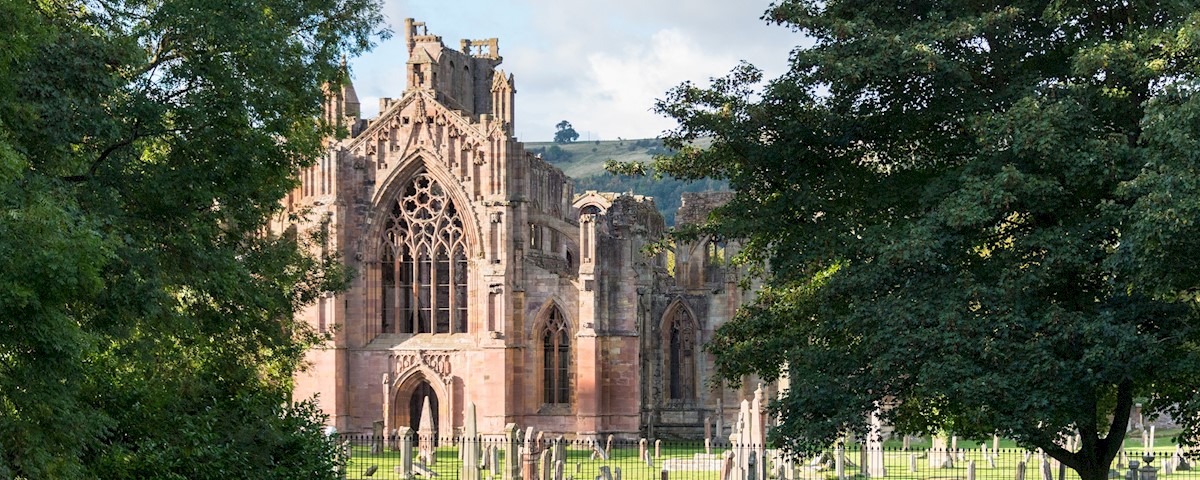The Virgin Mary (& Paul) re-appear in Melrose
Four medieval statues – Virgin Mary, Saint Paul, Saint Peter and Saint Andrew are once again adorning the walls of Melrose Abbey, Scotland. Scots king David I founded Melrose Abbey, the first Cistercian monastery in Scotland, in 1136. The Cistercians were drawn to this fertile spot beside the River Tweed by its close associations with St Aidan and St Cuthbert. The monks came from Rievaulx Abbey in Yorkshire, the Cistercians’ great northern English missionary base. Monastic life continued at Melrose for the next 450 years. The last monk, John Watson, died around 1590. The crumbling abbey church was used as a parish church until a new kirk was built nearby in 1810.
The great abbey church of St Mary the Virgin at Melrose loomed large in the lives of many people on both sides of the border. Alexander II (died 1249) was among the privileged people to be buried here. The heart of Robert the Bruce (died 1329) is also buried at Melrose, although his body was interred at Dunfermline Abbey. Melrose’s was attacked by Edward I (1300 and 1307) and Edward II (1322), Richard II’s attack in 1385 led to a complete rebuilding of the abbey church, the War of the Rough Wooing in the 1540s caused further damage.
After their removal the statues underwent cleaning and conservation, once complete moulds were taken (just in case). These replicas are the statues you can see today on the Abbey walls. This whole region of Scotland abounds with Abbey’s and aye, we do offer our guests itineraries that include many, according to their wishes, as is well known, MCLEANSCOTLAND offer totally bespoke Scottish tours.
ENDS. Paul McLean, Scottish history numpty from Connel, now Perth.

